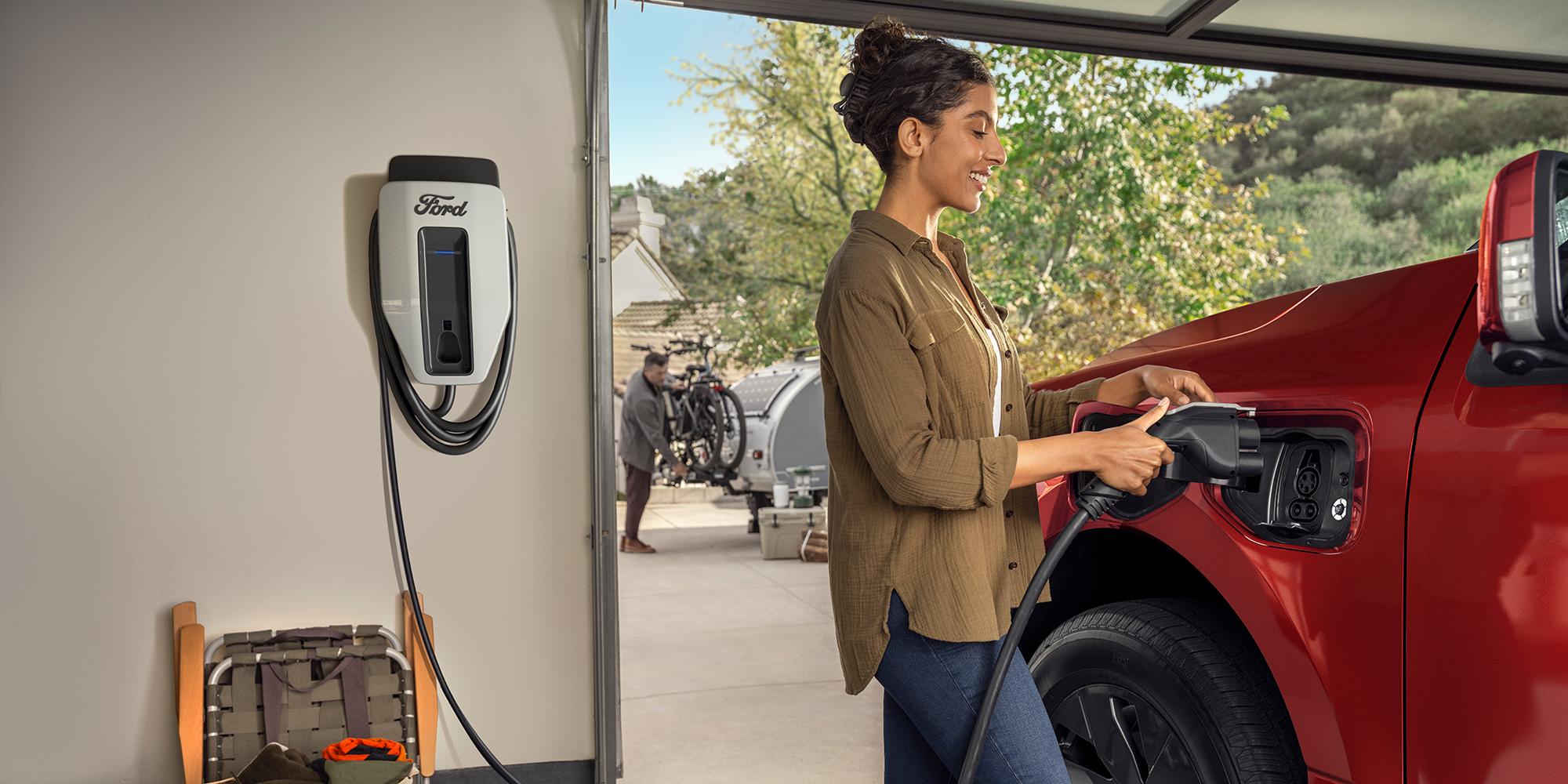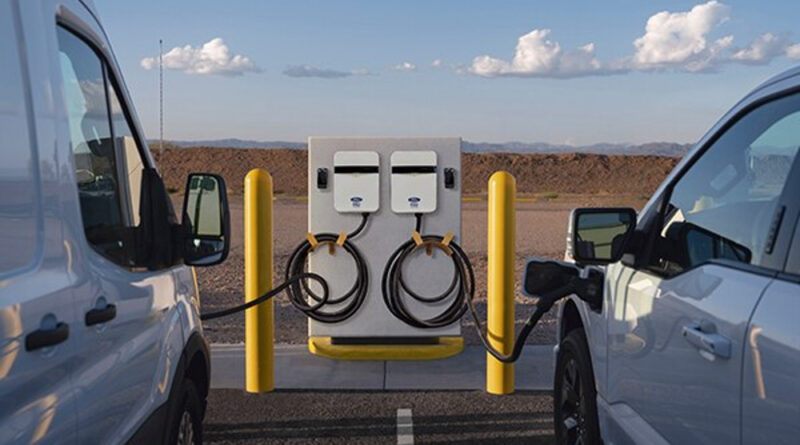US Cities Leading The Way To Electric Cars & Trucks
Many cities, towns, and counties in the US have adopted plans to reduce their carbon dioxide emissions, on the theory that they have a duty to their citizens to provide them with an environment that will allow them and the progeny to survive. Most of those municipalities have a significant fleet of motor vehicles from police cars to emergency medical vehicles and trash-hauling trucks to street sweepers. Nationwide, they own and operate 4 million vehicles.
In order to comply with their carbon reduction plans, many of them are turning to electric vehicles, Scientific American says, citing a report by E&E News. Overall, they are transitioning to electric vehicles much more quickly than the private sector, which is seeing a modest slowdown of late, prompted by fears about charging infrastructure, range, and the possible influence of sunspots on their driving experience. Municipalities have no such concerns and have made sure to install the charging equipment needed to meet their needs. With the availability of grant funding and federal incentives, the local jurisdictions are finding the cost of converting their fleets is getting less and less as time goes by.
Thought Leaders On Electric Cars
One of the factors that holds people back from purchasing (or leasing) an electric car is fear of the unknown. Where will I plug in? Can I drive it through a car wash without it dissolving in a shower of sparks? Will I have to spend $10,000 to replace the battery every two years? Where is the gearshift?
People are understandably nervous about new technology. Some people waited a decade or more before buying a microwave oven for fear that being in the same room with one would liquefy their brains and cause them to leak out of their ears. Younger readers may snicker up their sleeve at such a ludicrous idea, but people once believed the human body could not tolerate moving at speeds higher than 20 mph and that cigarettes were good for our health. Having people who have actual experience with electric cars loose in the community is actually one of the best ways to overcome some of those fears, which could be a very good thing for the EV revolution in general.
Cities can punch above their weight by helping to demonstrate that electric cars are viable both for businesses and private owners, said Ian Seamans, who works with city governments at Environment Texas. A large part of the effect is modeling this behavior for the public,” he said. City policies are particularly important in Republican-led states such as Texas, where there are few state incentives for clean vehicles, Seamans said.
Dallas Chooses Ford For Charging Its Electric Cars

Cities also are warming up to electric cars because of their lower costs for maintenance and fuel. A lot of cities are under pressure both from residents and federal regulators to cut ozone and other localized air pollution caused by vehicles. Dallas, the ninth-largest city in the country, announced an agreement Tuesday with Ford Motor Co. to buy $9.5 million worth of charging equipment over 10 years, along with 100 electric cars a year.
Ford estimates Dallas could save more than $300,000 over three years in tax credits and reduced fuel costs, just on its purchase of F-150 Lightning electric trucks. Ford also is working with the city on software to help optimize both the location and operation of its chargers, which could result in “substantial” savings, the company said in a statement.
In a press release, Ford said Ford Pro and the city of Dallas have entered into a 10-year agreement to grow and manage EV charging infrastructure for the city’s fleet operations. As part of the agreement, the city will install Ford Pro chargers at various locations throughout the city and use Ford Pro smart charging software to customize and manage EV charging performance to help ensure the electric cars and trucks in the city’s fleet are charged optimally and ready for work when needed.
In 2020, Dallas approved a Comprehensive Environmental & Climate Action Plan (CECAP) that includes efforts to reduce carbon emissions, in part by installing EV chargers throughout the city and adding light duty EVs to its fleet of 5,400 vehicles. “The city of Dallas is committed to a clean, safe, and healthy environment, and we’re making great strides in our efforts to reduce emissions and improve air quality,” said mayor Eric Johnson. “This agreement with Ford Pro marks a significant milestone and will help our city avoid energy waste and save money on energy costs. We look forward to building upon our work with Ford Pro to further scale EV charging infrastructure and electrify our fleet operations to continue to serve our great city now and in the future.”
“EV adoption is on the rise with state and local government fleets, and we’re proud to provide smart charging software and hardware to help electrify one of the Lone Star State’s biggest cities in one of America’s biggest metro areas,” said Ford Pro CEO Ted Cannis. “The impact software can have on EV charging can be substantial, helping public agencies like the City of Dallas not only manage charging infrastructure today, but help determine where chargers may be needed in the future.”
About 5% of Dallas’ city fleet is made up of EVs, hybrids, or plug-in hybrids, according to the American Council for an Energy Efficient Economy, which tracks cities’ clean transportation investments. Statewide, about 2% of vehicles are electric. In New York City and San Jose, California, 25% of the municipal fleet is made up of clean vehicles, according to the ACEEE. At the other end of the scale, only 2% of the city fleet in Phoenix is comprised of clean vehicles. Fort Worth, Texas, is even less at 1.2%.
Need An Electric Zamboni?
Typically, cities have started by buying light and medium duty vehicles such as sedans and pickups. But a growing number of specialized trucks are coming on the market, including battery-powered trash trucks and fire engines. The city of Boise, Idaho, rolled out an electric Zamboni last year for its ice skating center.
“Most cities have taken the approach of ‘Let’s be as ambitious as possible and start to socialize and change the norms around light-duty and medium-duty vehicles,’” said Kate Wright, executive director of the nonprofit group Climate Mayors. Her organization has worked with the Electrification Coalition, another nonprofit, to set up a purchasing cooperative for cities that are looking for electric models. That’s important for smaller municipalities that may not have the staff or the time to search for electric cars.
The 2021 bipartisan infrastructure law set aside billions of dollars for public chargers, some of which have gone to cities. In other cases, metropolitan planning organizations or groups of cities have banded together to win grants. The 2022 Inflation Reduction Act allowed cities and nonprofit groups to qualify for EV tax credits even though they typically don’t pay federal income taxes through a process known as “elective pay.”
The Electrification Coalition is working to educate fleet managers in smaller cities about the tax credits and help them understand other basics, such as the best time of year to place an order for a fleet. A lot of cities have gotten past their initial EV purchase, said Matt Stephens-Rich, director of technical services for the coalition. “Now the attitude is shifting to not just ‘How do we buy one or two of these, but tens, dozens at a time?'” he said.
The Takeaway
Wanting to lower carbon emissions is laudable for any community, but cites, towns, and counties often operate under tight budget restrictions. There is not a lot of surplus money available to fund “nice to have” programs when there are so many “need to have” situations that have to be funded. With electricity about one-third the cost of gasoline, fuel savings alone for 5,400 vehicles is a big number. Add in no oil changes, transmission repairs, muffler replacements, and fewer brake jobs, and the savings will be substantial.
This is all wonderful news for those who advocate for more electric cars. The EV revolution may not be forging ahead quite as rapidly as we might hope. Structural changes that have not been completed yet need to take place first. In addition roughly half the population in the US still has little idea what electric cars are all about and why they are preferable to conventional cars. The more people drive them at work, the sooner that information will filter though the community at large.
The EV revolution isn’t over; it is just gathering steam for its next leap forward. Relax, all you fans of electric cars. Everything is going to be just fine.
Have a tip for CleanTechnica? Want to advertise? Want to suggest a guest for our CleanTech Talk podcast? Contact us here.
Latest CleanTechnica.TV Videos

CleanTechnica uses affiliate links. See our policy here.

